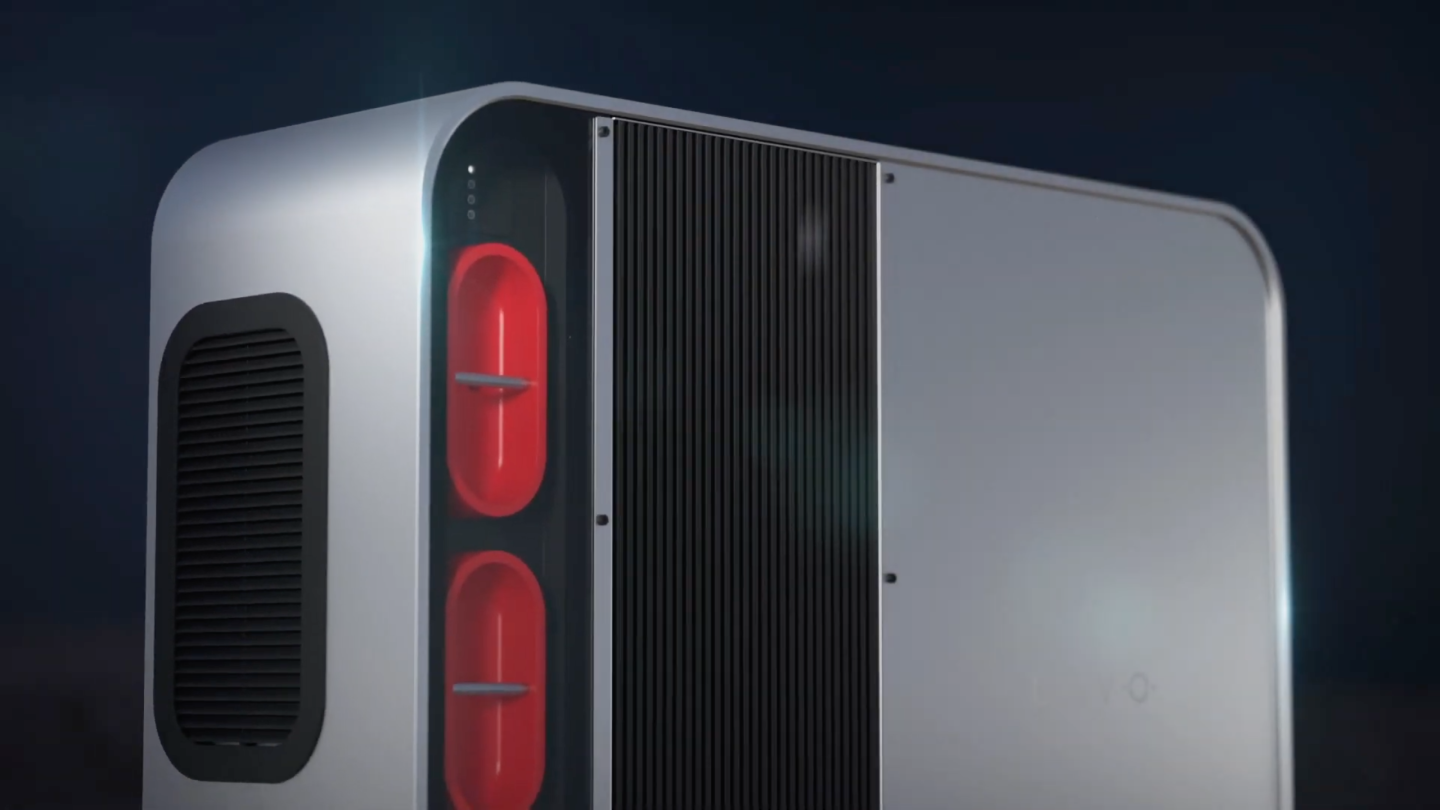To get off the grid with home solar, you need to be able to generate energy when the Sun’s out, and store it for when it’s not. Normally, people do this with lithium battery systems – Tesla’s Powerwall 2 is an example. But Australian company Lavo has built a rather spunky (if chunky) cabinet that can sit on the side of your house and store your excess energy as hydrogen.
The Lavo Green Energy Storage System measures 1,680 x 1,240 x 400 mm (66 x 49 x 15.7 inches) and weighs a meaty 324 kg (714 lb), making it very unlikely to be pocketed by a thief. You connect it to your solar inverter (it has to be a hybrid one) and the mains water (through a purification unit), and sit back as it uses excess energy to electrolyze the water, releasing oxygen and storing the hydrogen in a patented metal hydride “sponge” at a pressure of 30 bar, or 435 psi.
It stores some 40 kilowatt-hours worth of energy, three times as much as Tesla’s current Powerwall 2 and enough to run an average home for two days. And when that energy is needed, it uses a fuel cell to deliver energy into the home, adding a small 5-kWh lithium buffer battery for instantaneous response. There’s Wi-Fi connectivity, and a phone app for monitoring and control, and businesses with higher power needs can run several in parallel to form an “intelligent virtual power plant.”
At AU$34,750 (US$26,900), it costs more than what you’d pay for three Powerwalls in Australia, but not by a huge amount, and that price is set to drop to AU$29,450 (US$22,800) in the last quarter of 2022, by which point Lavo says it’ll be available internationally.

Lavo
How is it better than a battery? Well, Lavo says the key bits should last much longer than a battery system, up to 30 years instead of maybe 15 from a lithium battery setup. There are also no toxic chemicals to dispose of afterwards, and the company says that even though it’s a bit of a beast, a single Lavo system is more compact than an equivalent amount of battery storage.
How is it worse? Well, the safety aspect is certainly open to debate. Lavo says a leak will rise and disperse so quickly that there’s little chance of a fire or explosion, and that hydrogen is “inherently no more dangerous than other conventional fuels such as gasoline or natural gas,” but it’s fair to say it could really get a party started in the rare event that a house fire managed to reach it.
Then there’s the efficiency. Batteries store and release energy with minimal losses; for every kilowatt-hour your rooftop array generates and sticks into a battery, you’ll get back more than 90 percent of it. But the process of generating hydrogen by electrolysis using a proton exchange membrane is only about 80 percent efficient, so you lose 20 percent straight away. And at the other end, you’ll lose somewhere around half of what you’ve got stored in the process of converting the hydrogen back into energy through a fuel cell.
So not only does it take more energy to fill up, a 40-kWh hydrogen energy storage system might start looking a lot like a 20-kWh system when you actually try to get the energy back out of it. The Lavo folks say this system’s “round-trip efficiency is above 50 percent,” so taking them at their word, you’re still tossing out roughly as much energy as you’re keeping.

Lavo
And the final joy killer is the system’s maximum continuous power output of 5 kW, limited presumably by the throughput of the fuel cell. There are single split-system air-con systems out there that draw more than 7 kW, and they’re not particularly extravagant ones. 5 kW of continuous power output is going to be an issue; you’ll need to keep your grid connection active.
Still, it’s early days, and hydrogen is the hottest topic in the energy sector right now. It’s not infeasible to think home storage units might start making sense at some point down the track, but Lavo will likely find this (admittedly gorgeous) unit tough to sell next to a battery system.
If you’re feeling masochistic, check out the video below, but be warned, the first words are “Life. It’s complicated. Surprising. Heartbreaking. Incredible.” You’ll want to skip to the minute mark if you don’t have a marketing-grade chuck-bucket handy.
LAVO™ Brand Film
Source: Lavo
Source of Article